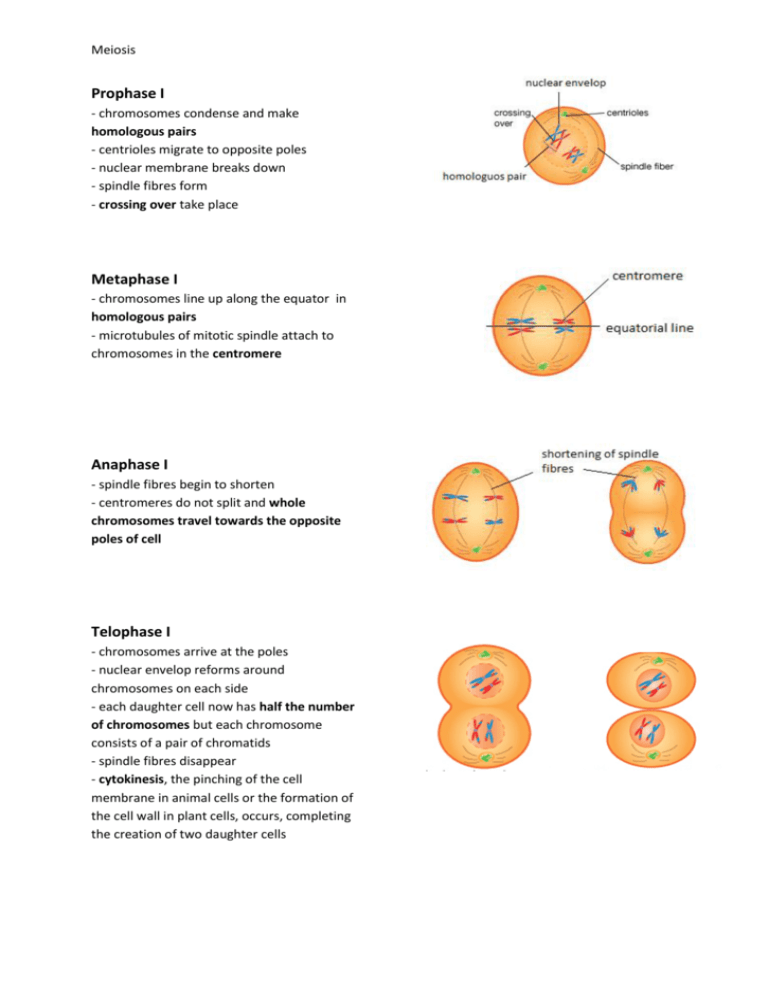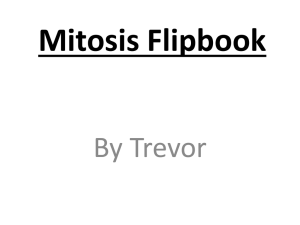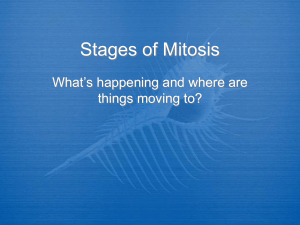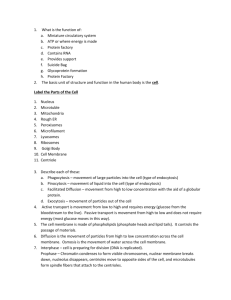Prophase I Metaphase I Anaphase I Telophase I
advertisement

Meiosis Prophase I - chromosomes condense and make homologous pairs - centrioles migrate to opposite poles - nuclear membrane breaks down - spindle fibres form - crossing over take place Metaphase I - chromosomes line up along the equator in homologous pairs - microtubules of mitotic spindle attach to chromosomes in the centromere Anaphase I - spindle fibres begin to shorten - centromeres do not split and whole chromosomes travel towards the opposite poles of cell Telophase I - chromosomes arrive at the poles - nuclear envelop reforms around chromosomes on each side - each daughter cell now has half the number of chromosomes but each chromosome consists of a pair of chromatids - spindle fibres disappear - cytokinesis, the pinching of the cell membrane in animal cells or the formation of the cell wall in plant cells, occurs, completing the creation of two daughter cells Meiosis Prophase II - nucleolus and nuclear envelope disappear - chromatids shorter and thicker - centrioles move to the polar regions and arrange spindle fibres Metaphase II - spindle fibres from the centrioles attach to centromeres - chromosomes are lined at equatorial plate Anaphase II - sister chromatids are pulled towards opposite poles (the sister chromatids by convention are now called sister chromosomes) - cell membrane begins to constrict Telophase II - decondensation and lengthening of the chromosomes - break down of the spindle - nuclear envelope reforms - cleavage produces a total of four daughter cells, each with a haploid set of chromosomes








